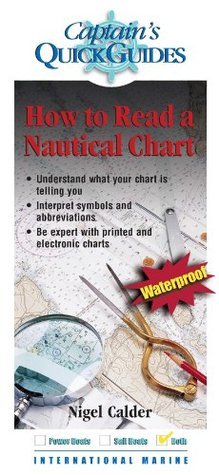What do you think?
Rate this book


Your quick-reference, on-board guide to the symbology and shorthand notations used on nautical charts
Nautical charts contain an incredible amount of information for those who know how to decipher them. But without a key to the symbology, a chart can be bewildering. Nigel Calder, one of today's most respected boating authors, helps you make sense complex system of signs, symbols, and graphic elements with this compact, waterproof, and nearly indestructible guide.
Nigel Calder is widely acknowledged as one of the world’s foremost nautical writers. A diesel mechanic for more than 25 years, he has also been a boatbuilder, cabinetmaker, and machinist. Calder is a frequent contributor to boating magazines in the United States and Britain and the author of several boating books.
16 pages, Kindle Edition
First published August 5, 2002